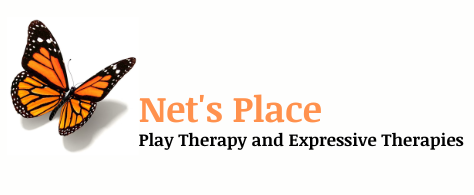SOME BASIC INFO ON PLAY THERAPY AND THERAPEUTIC PLAY.
Play Therapy is to children what counselling is to adults. Toys are the words and the evolving play is the story that is told to the listening and trusting adult. Play and creative activities encourage the expression of feelings and emotions. Unresolved issues and difficulties can be worked through with the child in a warm and safe environment. It is a unique medium to facilitate communication and healing for children of all different ages from 3 through to the teenage years.
Clinic studies have shown Play Therapy to be a very successful therapeutic tool for a wide range of children for a wide range of reasons. Play Therapy has been in existence since before the 1920’s and is used extensively throughout the western world and in third world countries.
Play Therapy is a relatively new concept in Australia. On July 1st, professionals, agencies and services, including parents and children throughout Australia who have been involved in Play Therapy have taken the time to do something to mark the importance of this day. In the Northern Territory, balloons were given out at stalls were people were informed about Play Therapy. Play Therapy Rooms had open days in various parts of the country and meetings were dedicated to reflect on this strengths based work with children, young people and their families.
Since the 1920’s Play Therapy has evolved and developed into various forms to support diverse populations and their needs. It would be too much to write about it all. I hope this small article will tickle your curiosity to start looking up on Play Therapy, Therapeutic Play, Art Therapy, Music Therapy and Expressive Therapies. It is a fascinating world.
Therapeutic play can assist in building healthy relationships through which children feel supported. It has been a very helpful tool for parents who with the use of play have build stronger and healthier bonds with their children
I have used play as a therapeutic tool over the last 18 years in a variety of settings. My main training is in Child Centred Play Therapy. In this approach, the child leads the play. The adult follows and is interested in the child’s story, which is told through themes in the child’s play. Forming the therapeutic relationship is all-important to this approach and the therapist or therapeutic worker has to be aware of her own presence, values and role.
Some variations on Play Therapy; adapting it to the needs of the population:
- Theraplay, an approach that helps with attachment between parent and child.
Jenberg, A. M., Booth, P.B. (1999). Theraplay. Helping Parents and Children Build Better Relationships Through Attachment-Based Play. San Francisco: Jossey-Bass.
- Group Play Therapy, supporting the development of social skills between siblings and/or peers
Landreth, G (2002). Play therapy: the art of the relationship. New York: Bruner Routledge.
Landreth, G., Homeyer, E., Glover, G. and Sweeney, D. (1996). Play Therapy Interventions with Children’s Problems. New Jersey: Jason Aronson
- Directive Group Play Therapy.
Leben, N. (1993). Directive Group Play Therapy -60 structured games for the treatment of ADHD, low self-esteem and Traumatized Children. Texas: Morning Glory Treatment Centre for Children
- Filial Therapy or Child Parent Relationship Therapy
VanFleet, R. (1994). Filial Therapy: Strengthening Parent-Child Relationships Through Play. Florida: Professional Resource Press
Bratton, S., Landreth, L., Kellam, T., Blackard, S. (2006) Child Parent Relationship Therapy (CPRT) Treatment Manual: A 10-Session Filial Therapy Model for Training Parents. New York: Routledge
- Gestalt Play Therapy
Oaklander, V. (1988). Windows to our children. NY: The Gestalt Journal Press.
Play Therapy has also been used successfully in combination with other methods, e.g. cognitive behaviour therapy. In Sydney, Dr. Athena Drewes will present a workshop on her work using this combination with children in foster care (9-11 August). For more details follow the link:
https://s.eventarc.com/event/view/445/entry/australasia-pacific-play-therapy-association-annual-training
What training is available?
Post Graduate Diploma’s in Play Therapy:
- Play Therapy Australia
http://www.playtherapyaustralia.com.au
- The Academy of Art and Play Therapy:
http://www.artandplay.com.au/
- Play Therapy Australasia:
http://www.playtherapy.org.au/
Introductory courses in creative therapies and therapeutic play:
- Creative Counselling Training Workshops. For more info contact Jacki Short:
- Institute of Family Practice
http://www.ifp.nsw.edu.au/newpdf/Child%20Centred%20Play.pdf
You don’t need to be a fully accredited Play Therapist if you want to use therapeutic play skills. Therapeutic Play uses techniques from Play Therapy and is not based in a clinical setting but can be practised by people in a variety of settings; day care, preschool, hospitals, residential care, etc.
How do we know it works?
Over the years a lot of research has been done;
- Dr Bruce Perry and Richard Gaskill have been working together in the area of Neuroscience and Play Therapy. Link to Richard’s article on Neuroscience and play therapy: http://www.a4pt.org/download.cfm?ID=25623 Richard Gaskill will also offer training in August together with Dr Athena Drewes
- A new book has recently been released. It is called: Child-Centered Play Therapy Research: The Evidence Base for Effective Practice by Jennifer N. Baggerly, Dee C. Ray, and Sue C. Bratton (Hardcover – Apr. 26, 2010). It provides an in-depth coverage of Child Centered Play Therapy research.
- Published research papers are also available from the Centre for Play Therapy, University of North Texas: http://cpt.unt.edu/
- http://www.a4pt.org/download.cfm?ID=10935
If you like to know more about the use of play, therapeutic play and play therapy, contact Annette Bex: [email protected]
